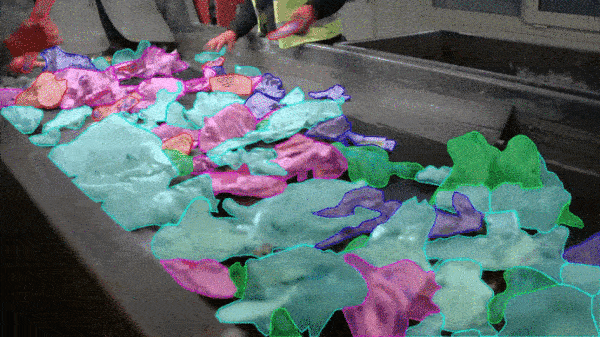Semantic Segmentation is Vital for Waste Management AI

Plastic pollution is a growing threat that is threatening the health of our oceans and could even contribute to illness in humans. Proper recycling practices and effective waste management can help to alleviate the pressure on the natural world, and keep human operators safe from dangerous materials and chemicals.
Developments in machine learning are increasingly being deployed in the waste management industry to make processing of potentially harmful waste safer and more efficient. The continued progress of this technology is reliant on accurate semantic segmentation annotation.
This blog will look at how training datasets, labeled with semantic segmentation techniques, are enabling exciting and important use cases in the world of waste management. In order to secure effective semantic segmentation annotation many developers use annotation services, like Keymakr. This blog will identify some key advantages gained from this kind of outsourcing.
Segmentation annotation
Semantic segmentation adds additional detail to image and video annotation by assigning each pixel in an image to a particular class. Objects are outlined by human annotators, and then assigned a colour and a label, every pixel in the image is treated in this way. For models designed for waste management applications, training data will outline and label relevant objects, such as specific plastic types, and separate these shapes from the background or other, non-target, objects. This creates an understanding of the image at the pixel level, a pixel mask that models can be trained to output when presented with new images.
Waste categorization
Semantic segmentation is empowering essential use cases in waste management. Waste categorization AI systems are enabling sorting facilities to process waste faster and with less input from human operators. Computer vision models can be combined with robotic arms to autonomously sort waste into defined categories, recycling and landfill for example.
To achieve this functionality models need to be trained with semantic segmentation annotation. This allows AI systems to quickly and accurately distinguish between waste types on a fast moving conveyor belt. Accurate training data greatly increases the reliability of waste categorization applications.

Managing hazardous waste
Sorting facilities are often asked to identify and process potentially dangerous waste. Medical and biohazard waste can be difficult to locate amongst other materials, and can cause harm to the human operators tasked with safely managing our waste products. Increasingly AI is being used to keep humans safe whilst quickly isolating hazardous objects and materials.
In combination with industrial robotics these systems can locate target objects, such as syringes or biohazard bags, and remove them without requiring human intervention. Integrated computer vision models like this can dramatically improve worker safety whilst maintaining the precision required to separate hazardous waste from more benign waste.

Maximising semantic segmentation
The useful AI applications discussed above are the product of collaboration between machine learning engineers and data annotation providers. Establishing an in-house annotation operation can be expensive and time-consuming for many companies. Outsourcing to experienced labeling services, like Keymakr, can remove the burden of annotation management from developers and ensure quality training datasets:
- Expert verification: Creating training data for waste management AI projects may require expert verification. Certain materials may be difficult to distinguish reliably in images and video. Annotation providers have a wealth of experience when it comes to finding experts who can verify and troubleshoot, ensuring that errors do not end up in final datasets.
- Video annotation: Annotating video is a significant challenge due to the multiplicative effect of thousands of individual video frames. Keymakr’s annotation platform is designed specifically with video annotation in mind. Advanced interpolation features allow objects to be automatically tracked from frame to frame.
- Project management: Keymakr’s annotation platform features unique project management functionality, including detailed metrics on each annotator’s performance.
Contact a team member to book your personalized demo today.




